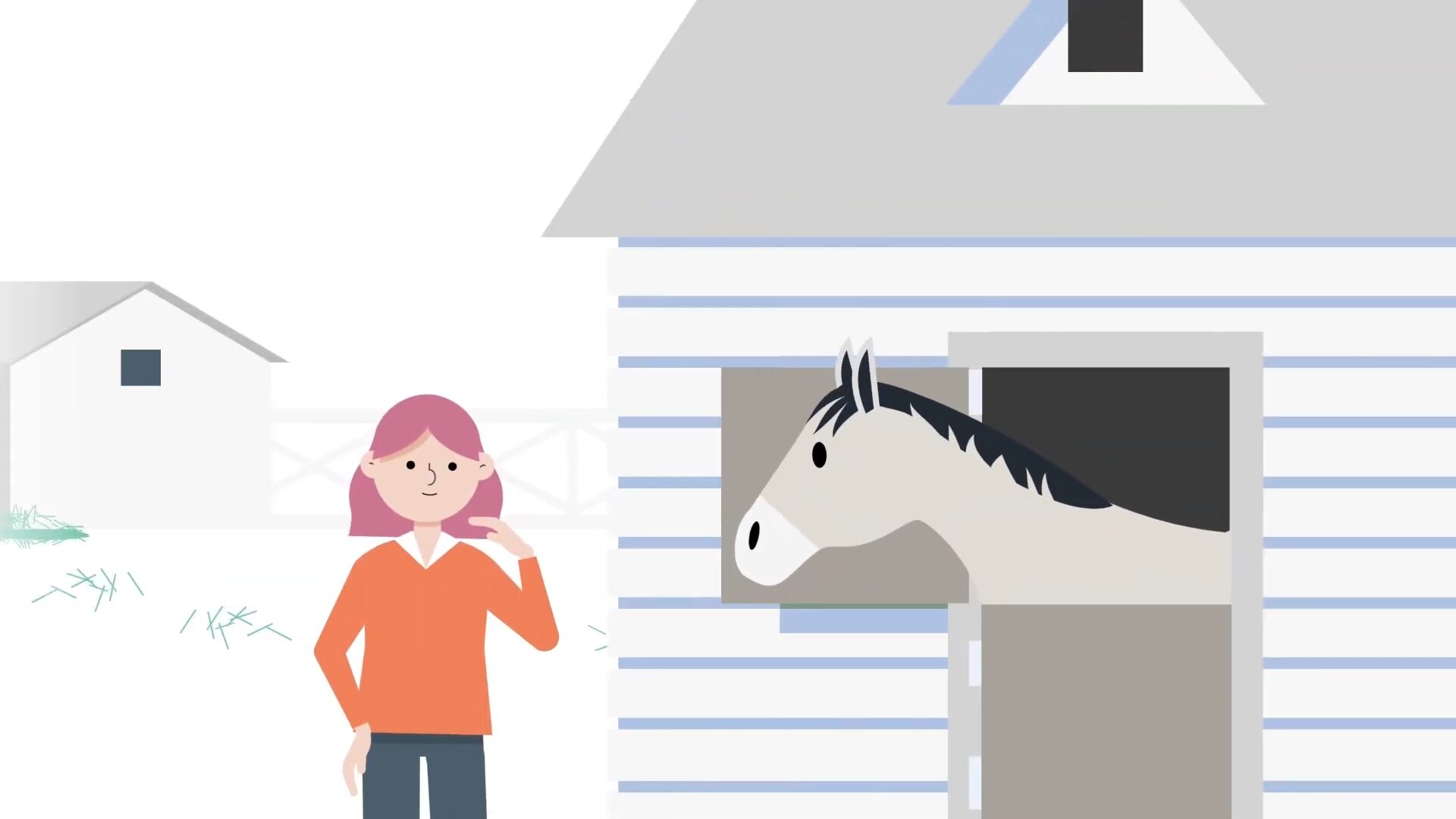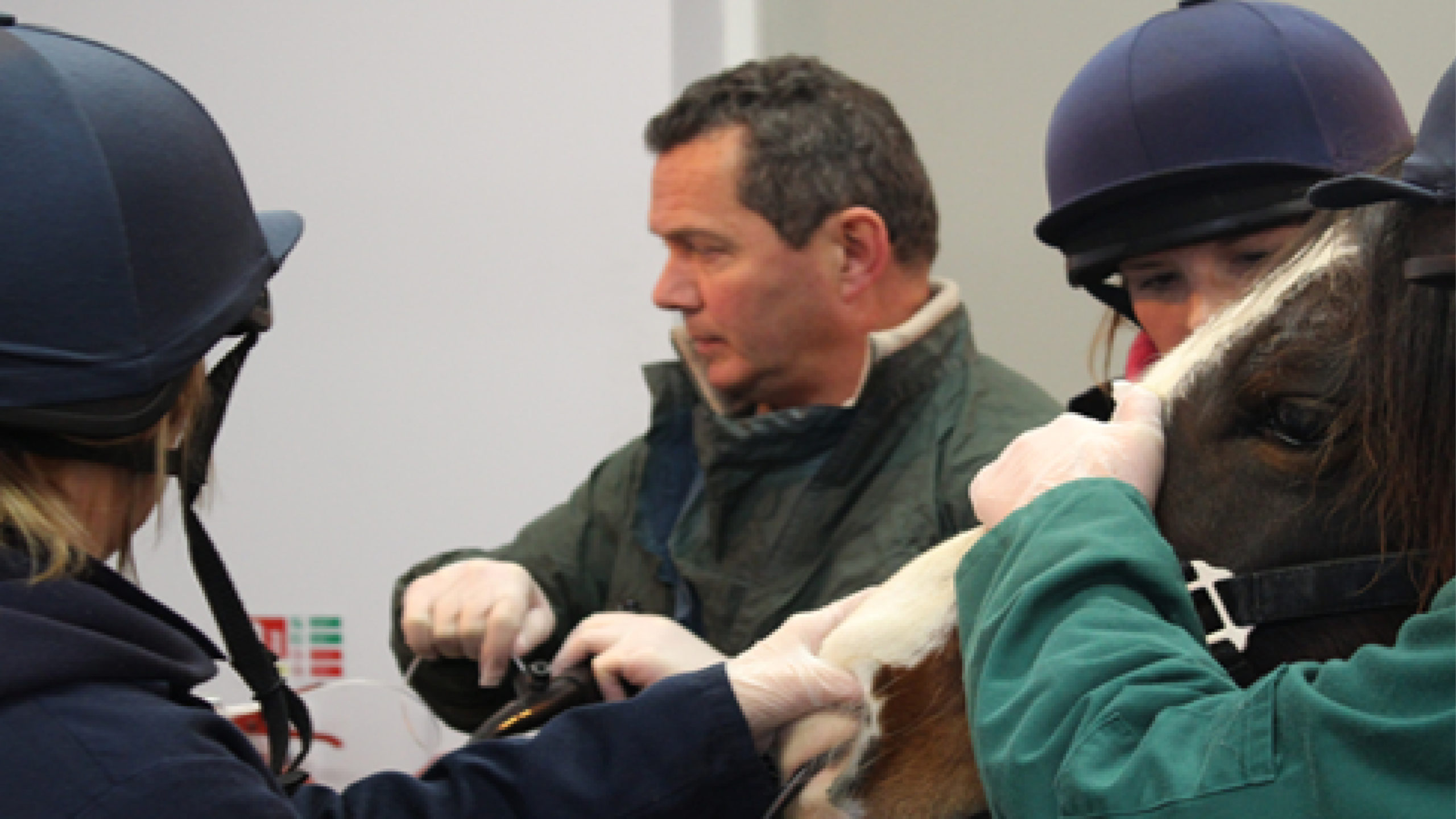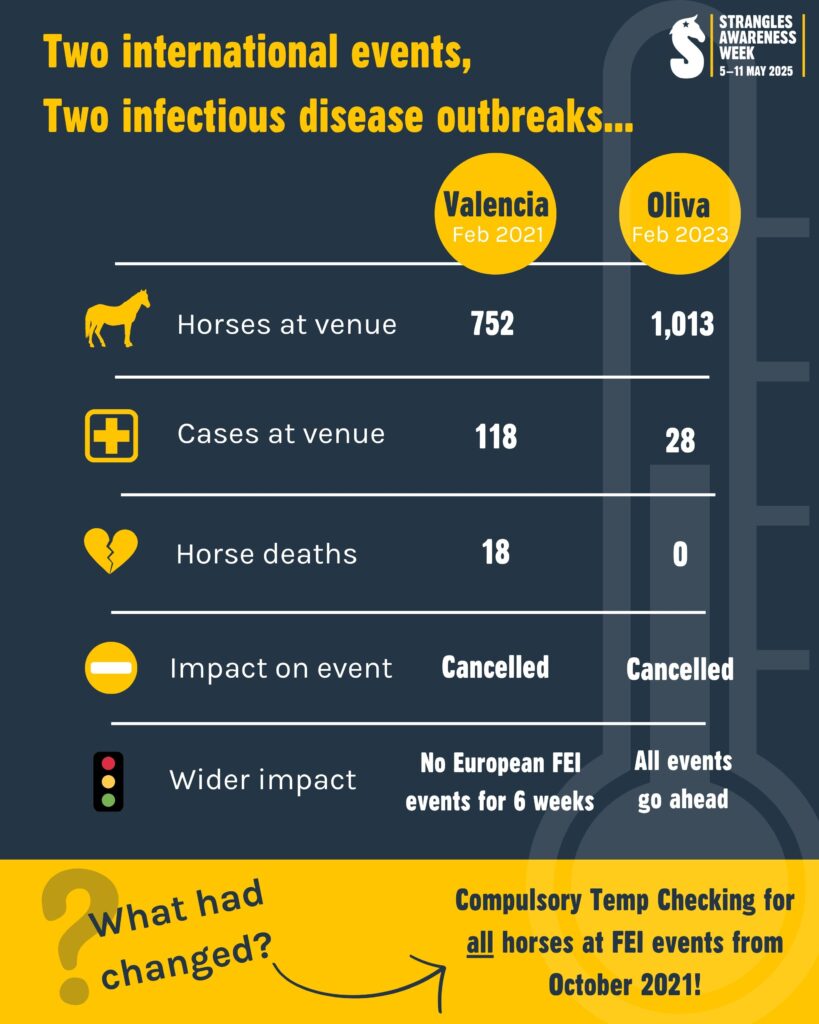Strangles is a serious bacterial infection which affects horses, donkeys ponies and mules. It is highly contagious and is one of the most common infectious diseases seen in equines in the UK.
What causes strangles
Strangles is caused by a bacterium, Streptococcus Equi Equi, which mainly affects the lymph nodes of the head and neck. Active infections may be characterised by fever, inappetence, depression, swellings around the head and neck, nasal discharge and open abscesses, whereas chronic carriers may not show any symptoms at all, but can pose a risk to others.
How to prevent strangles
Use the BEST steps, designed by Redwings, to help you take practical action and prevent the spread of strangles.
Raising awareness
Talking about strangles openly, planning and being knowledgeable about biosecurity is something that we can all do to help limit the spread and control this infection for horses nationwide. Knowing the symptoms, knowing your horse and monitoring for signs of change are things that as horse owners, we can all do.
Around 120 equines arrive at Bransby Horses each year, and with rescue animals, we may know very little about them. With anywhere between 280-400 equines to care for on-site, we take biosecurity and strangles really seriously, so that all our residents are safe, free from strangles and healthy.
Bransby Horses is proud to take part in the annual Strangles Awareness Week each May, when we encourage an open discussion and the sharing of stories and information on strangles.
You can support by sharing your strangles story, learn how to take your horse’s temperature, take part in Strangles Awareness Week and use the hashtags #SAW2025 #SpeakOutOnStrangles #Strangles.
Additional resources
Strangles Awareness

7:25

3:00

2:25

5:49
- What do horse owners need if they think their horse might be infected?
- What can you do to help farriers protect horses from strangles?
- How can you help your vet manage a strangles outbreak?
- Disinfecting transport between horses
- Strangles Case Study: Ellie
- Biosecurity at Bransby Horses
- Clinical Signs of Strangles
- Scarlett Survives Strangles
Find all the tools you’ll need to create advanced websites in one place. Stop waisting time searching for solutions.
We strive to innovate when it comes to functionality. Our mission is to be the best, come and join the ride.
Add more power to Elementor using our creative elements and make your projects look prettier than ever before.
Each and every one of our customers receives personalised assistance from our dedicated support team.
Remember we are here at Bransby Horses to support you with the health and welfare of your horse, if you require further information on any of the above or you would like to discuss your management plan please call 01427 787369 or email welfare@bransbyhorses.co.uk.



